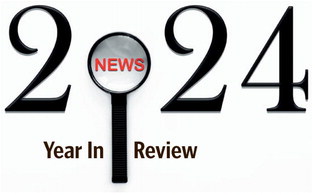Montana Hospitals In Dire Straits As Cases Increase
A month ago, fearing the worst, Montana’s medical community sounded the alarm, urging residents to get vaccinated and mask up as the Delta variant of COVID-19 began to spread. Now it appears the worst is arriving.
This week, hospitals from Billings to Missoula are instituting or preparing to institute a “crisis standard of care” under which medical services and supplies are rationed. While case numbers are still slightly lower than they were last winter during the virus’ previous peak, hospitals are being overwhelmed with COVID patients, many of them unvaccinated.
“It is really dire,” said Dr. James McKay, chief physician executive for Providence Montana, which oversees St. Patrick Hospital in Missoula and St. Joseph Medical Center in Polson. “It has never been this bad.”
According to the New York Times, the number of cases in Montana has jumped 46 percent in the last two weeks, the largest spike in the nation during that time. On Friday, Sept. 17, the state reports 1,209 new cases in Montana and more than 9,500 active cases. Hot spots include Flathead, Missoula and Yellowstone counties, although smaller counties are also seeing big increases, including Lincoln County with 359 active cases on Friday and Ravalli County with 318. Despite the climbing case count — and impassioned pleas from the medical community — Montana’s vaccination rate remains low compared to other states, with 51 percent of the eligible population immunized.
As of Friday, 1,877 Montanans have died from COVID-19, including at least 35 this week.
Crisis care standards are codified by the state Department of Public Health and Human Services and are implemented at individual hospitals when it becomes impossible to deliver the normal standard of care to all patients. In some instances, it is possible that health care workers will prioritize life-saving care only to patients who have the best chance of survival.
“The goal of medical care in this situation shifts from a focus on individual patients to managing resources in a manner that results in the best possible health outcomes for the community as a whole,” officials with Billings Clinic, one of the hospitals preparing to employ crisis care protocols, wrote in a press release this week. “This can include decisions about how to save the most lives by allocating or reallocating equipment such as ventilators, spaces such as ICU beds, or decisions about when resuscitation efforts are appropriate.”
Officials at Billings Clinic said the transition into crisis care could occur “rapidly,” and that it would also impact patients with conditions unrelated to COVID-19. Billings’ other hospital, St. Vincent Healthcare, said it is in better shape than some other Montana hospitals and despite having 53 COVID patients on Friday morning, is not considering switching to a crisis care standard yet.
Further west, St. Peter’s Health in Helena announced Thursday that it has transitioned into crisis care mode. Bozeman Health was close to doing the same.
“For the first time in my career, we are at the point where not every patient in need will get the care that we might wish we could give,” said Dr. Shelly Harkins, chief medical officer and president of St. Peter’s, during a press conference last week.
McKay, chief physician executive for Providence in Missoula, said his hospital is making similar preparations should it need to ration care. McKay said the number of COVID patients at the hospital in Missoula has increased dramatically in recent weeks, and that many are younger, some in their 20s and 30s. In order to handle the increase, the hospital has turned an ambulance garage into a makeshift triage area for COVID patients.
McKay said many of his staff members are also getting sick from the virus, and that this week he was down 56 people at the hospitals in Missoula and Polson because they either had the virus or had been exposed to it and needed to quarantine.
In an effort to alleviate a shortage of health care workers, the Montana Department of Labor and Industry has started reaching out to nurses, nurse practitioners and other medical workers whose licenses may have expired or who have retired to ask for help.
“The Department hears regularly from employers, including health care providers, who have been impacted by the ongoing workforce shortage. With COVID-related hospitalizations increasing statewide, at the Governor’s direction the Department is looking at ways to mitigate the health care worker shortage and ensure there are no unnecessary delays in the licensure process for individuals qualified to provide medical services,” wrote Jessica Nelson, public information officer for the department.
McKay said the last few weeks have been some of the most frustrating and stressful of his career, and he fears that things will only get worse for him and his staff. He said it is especially frustrating that many Montanans seem to be ignoring pleas from the medical community.
“We feel like we’re screaming into the void, urging people to do the right thing, but it just falls on deaf ears,” he said. “If there was ever a time to wear a mask indoors, now is that time. Don’t wait for a mandate. Just do the right thing.”


